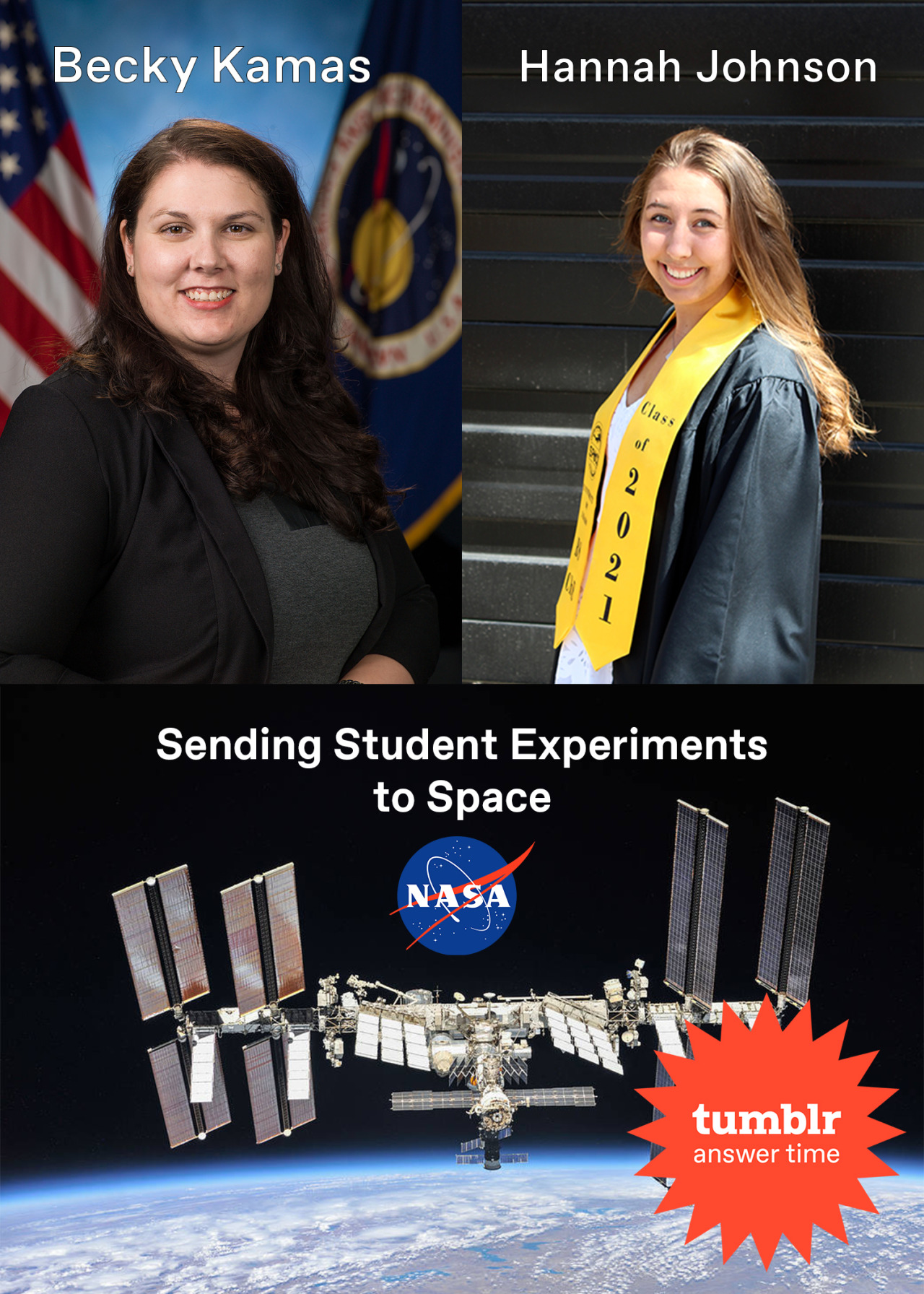Next Gen @ NASA: Celebrating National Intern Day
To celebrate National Intern Day, we asked interns to share how they got their internship and their perspective and advice to the next generation of prospective NASA interns.
Meet our interns and check out their suggestions for the next generation.
Sarah Kilpatrick, STDCE-2 Data Intern
Sarah is a summer Surface Tension Driven Convection Experiment Data Intern at NASA. Her inspiration for applying for an internship came from a passion for science from an early age. “I grew up in a family that liked, enjoyed and appreciated science and the fun of it all,” she recalls. “I grew up watching PBS, NOVA, and other science shows, so when I saw NASA had opportunities for students like me, I was very interested.”
Sarah’s advice to the next generation of NASA interns is one of perseverance and resilience.
Nicholas Natsoulas, Attitude Control Engineering Intern
Nicholas is a summer Attitude Control Engineering Intern at NASA. He wants to contribute to scientific innovation and discovery. “Overall, what inspired me to apply and come to work here was to contribute to the scientific exploration of space while learning about unique perspectives and innovative space discoveries.”
Nicholas’s advice for prospective NASA interns is to make the most out of your time here and to be a curious and eager learner.
“Use all the resources that are at your center and ask questions about projects you are working on. Don’t be afraid to talk to your mentor about your plans for the future and ask for any advice you may need, as they are more than willing to help you during your time here,” says Nicholas.
Nicholas and his mentor, Brent Faller, are using software to inform design decisions on a variety of spacecraft.
Nylana Murphy, former Additive Manufacturing Engineering Intern
As an American Indian College Fund ambassador and a Navajo engineer, Nylana Murphy hopes her internship story will inspire others to pursue a career in aerospace.
After attending the American Indian Science Engineering Society Conference, Nylana secured an internship in the additive manufacturing research laboratory at NASA Marshall.
“My internships have helped me get to where I am,” she says, “There is a career for everyone, where their dreams can become reality. Those dreams WILL become a reality.”
You might be wondering: what happens after a NASA internship Here’s what two of our former interns did.
Loral O’Hara, Astronaut, former intern
Lorel interned at NASA JPL in 2003, and at NASA Goddard in 2004. She earned science degrees from both the University of Kansas and Purdue University.
As a research and project engineer, O’Hara reported for duty in August 2017 and completed two years of training as an Astronaut Candidate. She is projected to fly in Soyuz missions as a NASA astronaut soon.
If she could go back in time, Loral says she would tell her younger self to enjoy the opportunities that come her way—and never stop looking for new ones. “Enjoy the whole journey of…figuring out what it is that you like to do and exploring all different kinds of things.”
Jeff Carlson, Assembly, Test, Launch Operations Engineer
The “7 Minutes of Terror” video piqued Jeff Carlson’s interest in working at JPL. He thought, “That’s the coolest thing I’ve ever heard of. I’ve got to go be a part of that in some way.” While interning at the Jet Propulsion Laboratory, he worked on Starshade, a sunflower-shaped device used to block starlight in order to reveal planets orbiting a star. Later, he went on to work on the team tasked with assembling and testing the “head” and “neck” (officially called the Remote Sensing Mast) for the Mars 2020 rover.
Want to join us in exploring the secrets of the universe? Visit intern.nasa.gov to learn more about open opportunities and requirements!
Make sure to follow us on Tumblr for your regular dose of space!
Credits: Isabel Rodriguez, Glenn Research Center intern and Claire O'Shea, Johnson Space Center intern










